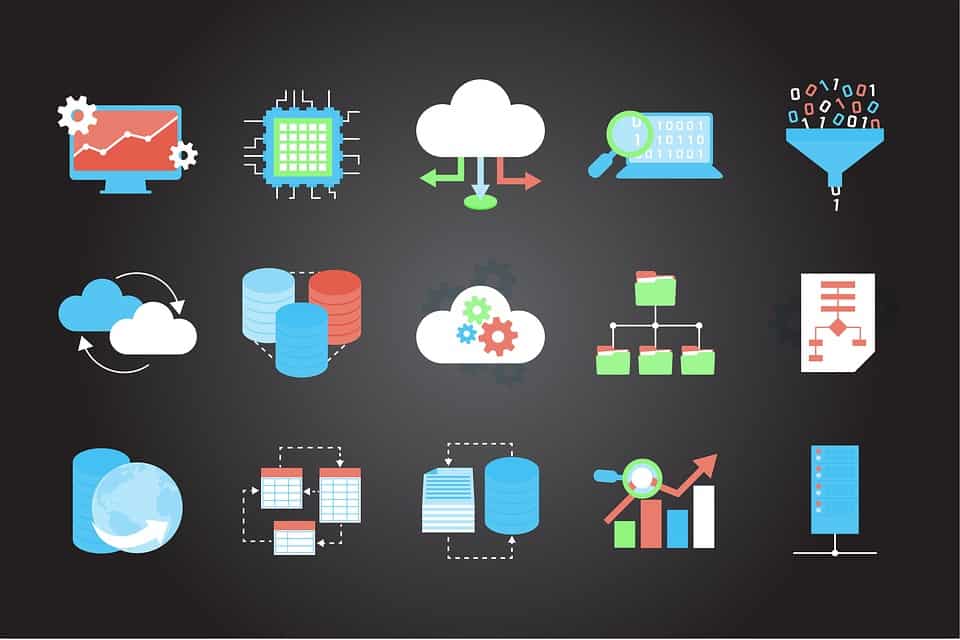
The amount of data the average business handles has been slowly growing over the last decade, riding on the back of the sheer amount of data we produce every day. This data needs to be collected, validated and stored so that they can be used in the future. This process – from the collection stage, validation and, finally, storage – is referred to as data management.
Data management is a difficult task because it takes a lot of effort and time to ensure your data is safe and usable. That’s not to mention the fact that management becomes more difficult with increasing volumes and velocity of incoming data.
Why Data Management is Necessary
In spite of the difficulties faced when managing data, it’s an important process because it helps companies gain more insight from new and existing data. These insights are potentially very important when it comes to making better business decisions.
Well-managed data is more readily available, better organized and thus easier to work with, and of higher quality. The latter aspect allows good data to produce more valuable insights, with fewer biases, for instance.
Data management also saves your organization the potential legal and financial implications that losing customer data brings, so many business owners decide to go with a top data management solution that meets all of their needs. Consider companies like Facebook, Equifax and Capital One, each of which has been fined millions of dollars for leaking consumer data.
Pick the Right platform: What Requirements Do You Have?
Big Data management is enabled by platforms designed for to collection, cleaning and processing of large amounts of data. The kind of software you choose should be dictated by your business intelligence requirements. This helps to avoid picking something with more features than you actually need and paying a hefty price in the process. As far as platforms go, two of the most prominent ones are Hadoop and Spark.
Spark works best when you need your operations to be speed-optimized, such as detecting fraudulent transactions for fintech companies. It is best to resort to Hadoop when you need to process already-existing data, rather than collecting it from scratch.
Collecting Data: Do it Ethically
There are several big data tools that currently exist to help you scrape potentially hundreds of gigabytes of data at a time from social media profiles, websites, and blogs. If you work with customers, you might even have direct access to consumer data, rather than having to obtain it from a third party.
When it comes to data collection, the largest challenge businesses are going to face is navigating the regulatory landscape. After Facebook-Cambridge Analytica debacle, developed countries have placed mounting pressure on businesses to be more open with how data is collected and what it’s used for. As a direct consequence, consumers are more wary about protecting their privacy online, leading to an even greater need for transparency.
Ethical collection of users’ data consists primarily of main components:
- Let users know what data you collect about them, at what point and how you use it.
- Give them the ability to opt out of collection or sharing of their data, unless it’s a crucial component of your business model. For instance, a bank can’t be realistically expected to not have card data.
- Have a privacy policy in place that contains all the information users need to know. When updated, inform them of the changes.
Trim It Down: Only Collect and Keep What You Need
A report by Forrester estimates that about 60% to 73% of data collected by businesses worldwide goes to waste. ‘Waste’ in this regard refers to data that’s never used at any point yet takes up precious resources such as storage space and memory.
To optimize for this, organizations should gather only data that they require. Forrester also reports that companies have attempted to remedy the situation by adopting big data technology such as Hadoop and Spark.
Such a situation, referred to as data saturation, isn’t merely a technical problem, either. Other than wasting resources, having data you don’t necessarily need, puts you at risk of exposing consumer data in case of a breach.
Determining the kind of data you collect is at your discretion but it should be done with consideration to the customer’s expectations. Selling their phone number to a third party is an example of the kind of abuse nobody expects. No person would realistically keep using a flashlight app that requests phone call permissions or an alarm clock with access to phone contacts.
Store the Data Securely
When data management is mentioned, most people’s minds immediately rush to the storage aspect of what mechanisms are used to store the data and what measures are used to keep it safe.
The need for data security often overlaps other data management considerations, such as collecting the least amount of data needed. Not surprisingly, then, failure to pay attention to secure data storage could land you in a myriad of regulatory troubles. Additionally, securing your data is potentially the most involving part of data management.
The first part of securing your network is understanding the software you’re working with. Take Hadoop, for instance. It’s still one of the most popular big data frameworks but also one of the most awfully insecure, at least by default.
Data stored on HDFS isn’t encrypted by default, there’s no fine-grain authentication mechanism and even when moving data through clusters, the information is not encrypted by default.
Securing your data involves a series of steps, including:
- Using firewalls to keep peripherals intact.
- Using access controls to ensure only authorized people can access the data at any one time. This includes using strong authentication mechanisms, file permissions and group access.
- Logging who accessed the data and when.
- Keeping the environment your big data management system is hosted on safe by updating the OS and other apps exposed to the internet.
In all this, remember that data breaches are costly. Large enterprises suffer an average loss of about $3.9 million as a result of a single data breach. SMEs are less likely to experience breaches, but when they do, it costs them $120,000 per breach.
This is an article provided by our partners network. It might not necessarily reflect the views or opinions of our editorial team and management.
Contributed content

Founder Dinis Guarda
IntelligentHQ Your New Business Network.
IntelligentHQ is a Business network and an expert source for finance, capital markets and intelligence for thousands of global business professionals, startups, and companies.
We exist at the point of intersection between technology, social media, finance and innovation.
IntelligentHQ leverages innovation and scale of social digital technology, analytics, news, and distribution to create an unparalleled, full digital medium and social business networks spectrum.
IntelligentHQ is working hard, to become a trusted, and indispensable source of business news and analytics, within financial services and its associated supply chains and ecosystems












